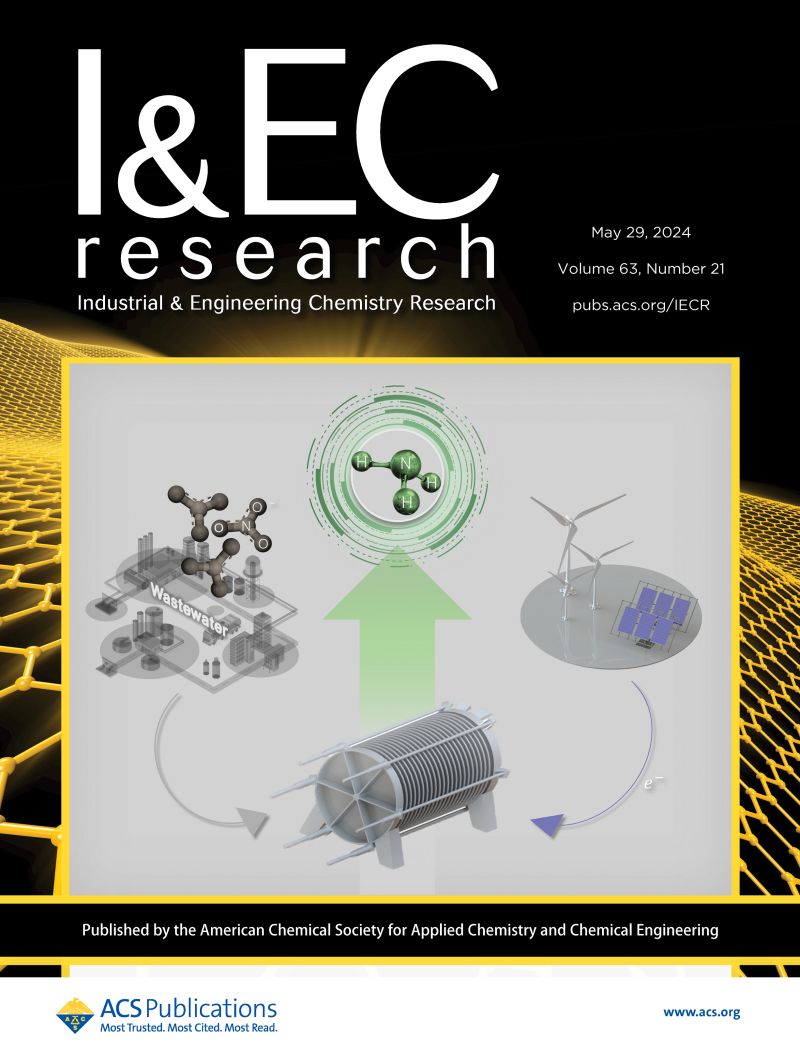A 2D Continuum Model Based on Particle-Resolved CFD for Packed-Bed Reactors
IF 3.8
3区 工程技术
Q2 ENGINEERING, CHEMICAL
引用次数: 0
Abstract
Classical 2D continuum models often fail to accurately predict temperature distributions in packed bed reactors due to their reliance on empirical correlations and simplified assumptions regarding the bed structure. This work develops an improved 2D continuum model that utilizes particle-resolved computational fluid dynamics (PRCFD) simulations to determine the spatially distributed effective thermal conductivity. This model addresses the inaccuracies of classical 2D continuum models and the high computational cost of the PRCFD model. The proposed 2D continuum model is highly accurate, as demonstrated by comparisons with classical 2D continuum models in predicting radial and axial temperature profiles. Furthermore, the accuracy of the proposed model is further improved by using the sintered metal fiber method to calculate the effective thermal conductivity (2D-PW-SMF). The 2D-PW-SMF model shows excellent adaptability, yielding precise temperature predictions under various packing heights, tube-to-pellet diameter ratios, pellet shapes, inlet velocities, and temperature zones. The accuracy of the 2D-PW-SMF model is also examined using a dry reforming of methane reaction, demonstrating its great feasibility in industrial applications. This work provides a powerful and efficient tool for the design and optimization of industrial packed bed reactors.

基于颗粒分解CFD的填料床反应器二维连续体模型
由于传统的二维连续体模型依赖于经验关联和关于床层结构的简化假设,往往不能准确地预测填充床反应器中的温度分布。本研究开发了一种改进的二维连续体模型,该模型利用颗粒分解计算流体动力学(PRCFD)模拟来确定空间分布的有效导热系数。该模型解决了传统二维连续体模型的不准确性和PRCFD模型计算成本高的问题。与传统的二维连续介质模型相比,该模型在预测径向和轴向温度分布方面具有较高的精度。此外,采用烧结金属纤维法计算有效导热系数(2D-PW-SMF)进一步提高了模型的准确性。2D-PW-SMF模型具有出色的适应性,可以在各种填料高度、管与球团直径比、球团形状、入口速度和温度区域下精确预测温度。利用甲烷反应的干重整实验验证了2D-PW-SMF模型的准确性,证明了其在工业应用中的可行性。本研究为工业填料床反应器的设计与优化提供了有力而有效的工具。
本文章由计算机程序翻译,如有差异,请以英文原文为准。
求助全文
约1分钟内获得全文
求助全文
来源期刊

Industrial & Engineering Chemistry Research
工程技术-工程:化工
CiteScore
7.40
自引率
7.10%
发文量
1467
审稿时长
2.8 months
期刊介绍:
ndustrial & Engineering Chemistry, with variations in title and format, has been published since 1909 by the American Chemical Society. Industrial & Engineering Chemistry Research is a weekly publication that reports industrial and academic research in the broad fields of applied chemistry and chemical engineering with special focus on fundamentals, processes, and products.
 求助内容:
求助内容: 应助结果提醒方式:
应助结果提醒方式:


